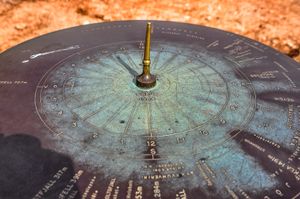Let's take a journey through the evolution of timekeeping devices. Timekeeping has always been a big deal for humans, whether it's tracking seasons or planning our daily activities. Our ancestors were always looking for ways to accurately measure and keep track of time. So, let's dive into the different types of devices they used.
Sundials: The Start of Timekeeping
Ancient civilizations like the Egyptians and Babylonians were already using sundials to tell the time as early as 1500 BCE. These devices were simple but effective, using the position of the sun to show the time of day. There were all sorts of sundials, from flat to spherical, but they were limited because they could only work when the sun was out.
Water Clocks: Measuring Time with Water
Around 1400 BCE, people started using water clocks to measure time intervals. These devices relied on the flow of water, making them more consistent than sundials. Different cultures like the Greeks, Egyptians, and Chinese used water clocks for practical and ceremonial purposes.
Hourglasses: Watching Time Pass
Hourglasses became popular in medieval Europe between 300 and 800 CE. These devices measured time based on the flow of sand through a narrow passage. They were used for navigation at sea and timing religious ceremonies. Hourglasses were easy to carry around and use, making them a handy tool for many people.
Astrolabes: Timekeeping from the Sky
Astrolabes were used to measure time based on the position of celestial bodies. They were sophisticated astronomical instruments that dated back to 200 BCE. People used them for centuries in Greece, Europe, and Islamic countries for navigation and studying the cosmos.
Mechanical Clocks: Tick-Tock Goes the Progress
In the late 13th and early 14th centuries, people in Europe invented mechanical clocks. These clocks were a big step forward in timekeeping technology because they used a verge-and-foliot escapement mechanism. They were more accurate and consistent than previous timekeeping devices.
Pocket Watches: Time on the Go
In the early 16th century, people were able to miniaturize clock technology enough to make pocket watches. They started off as pendants and later moved to pockets. They weren't as accurate as today's watches, but they marked the start of personal timekeeping.
Wristwatches: The Modern Timekeeping Companion
Wristwatches came onto the scene in the late 19th and early 20th centuries. They started out as a practical accessory for women, but soon became popular among men, especially soldiers during World War I. Nowadays, wristwatches are a must-have accessory and a symbol of style and status.
Conclusion
In conclusion, timekeeping devices have come a long way. From sundials to wristwatches, we've seen many innovative and creative ways to keep track of time. It's exciting to think about what kind of timekeeping devices we'll have in the future with all the new technology we have available. But no matter what happens, timekeeping devices will always be an important part of our lives.

